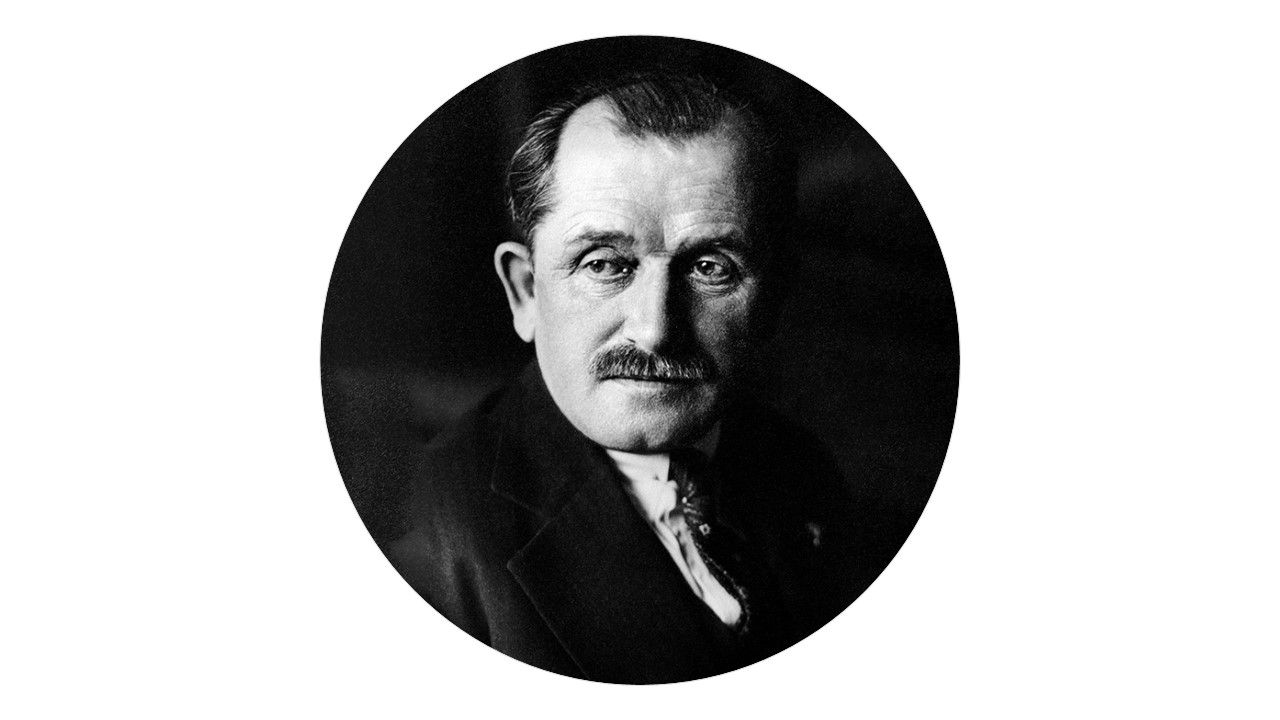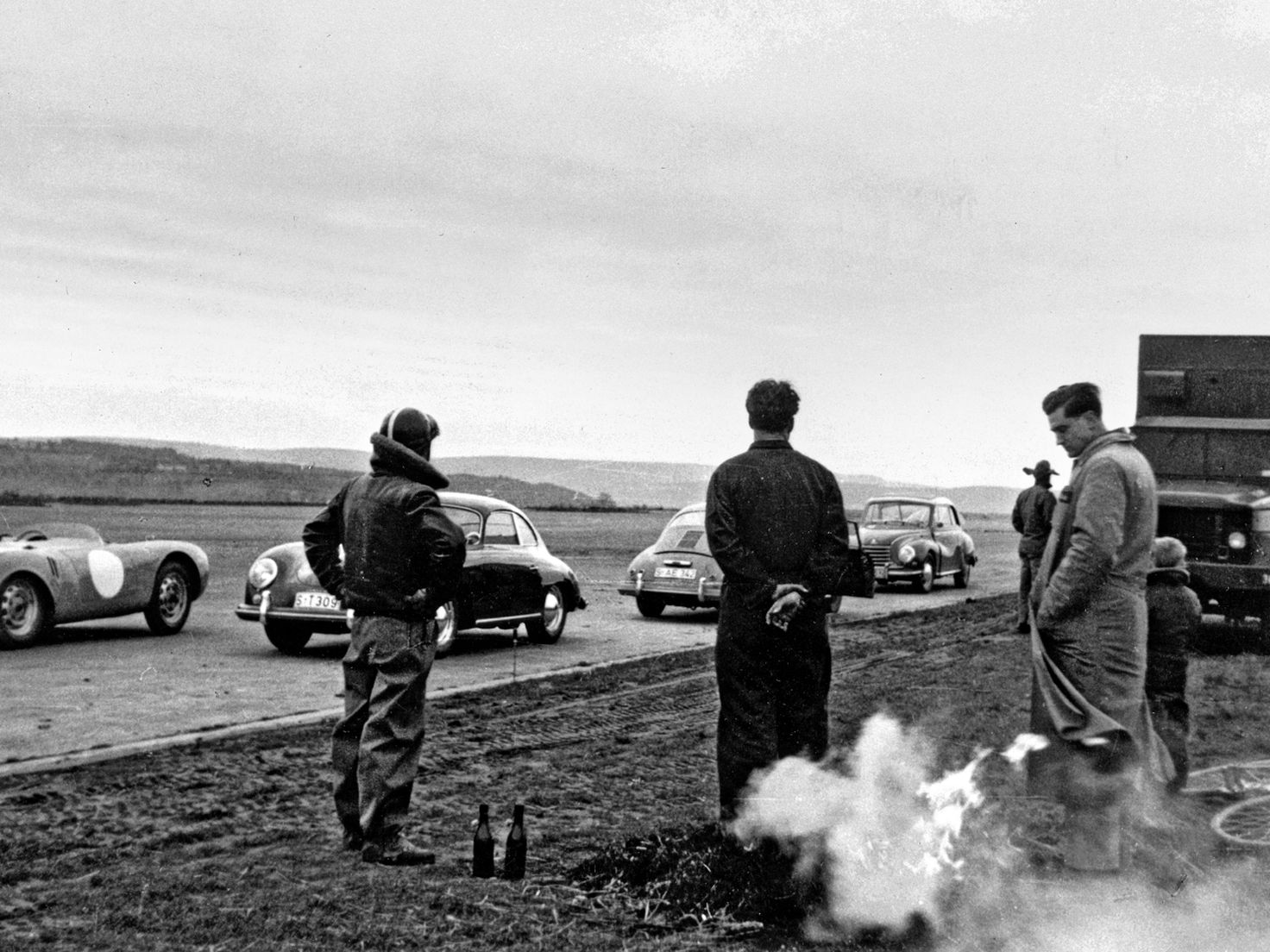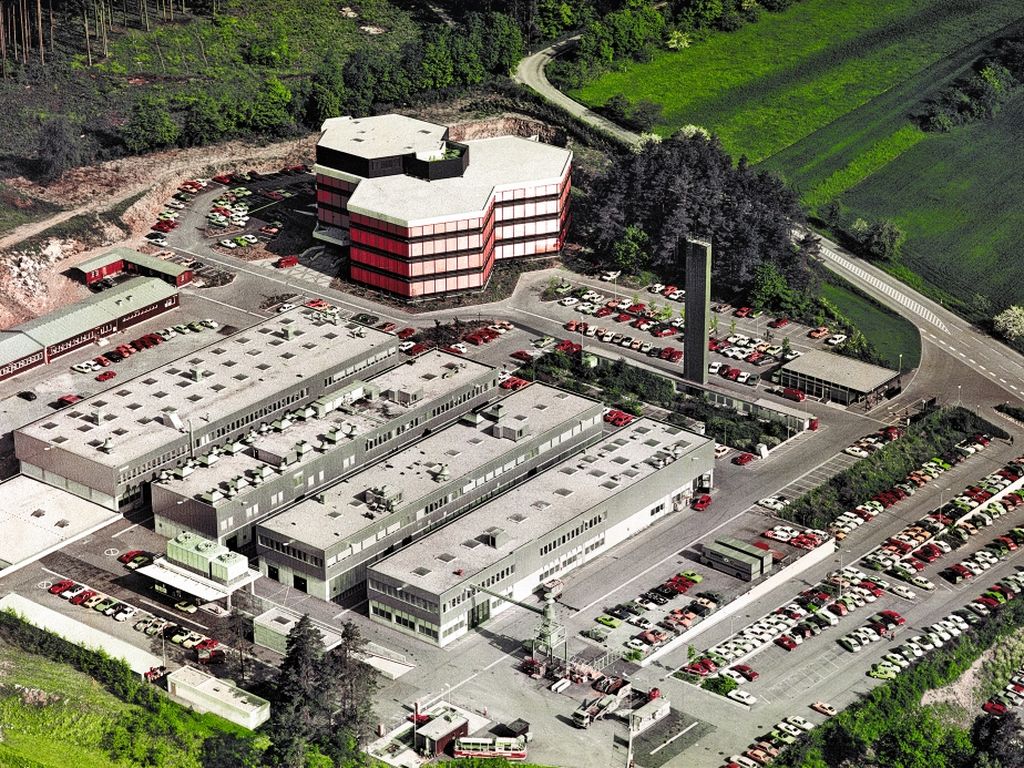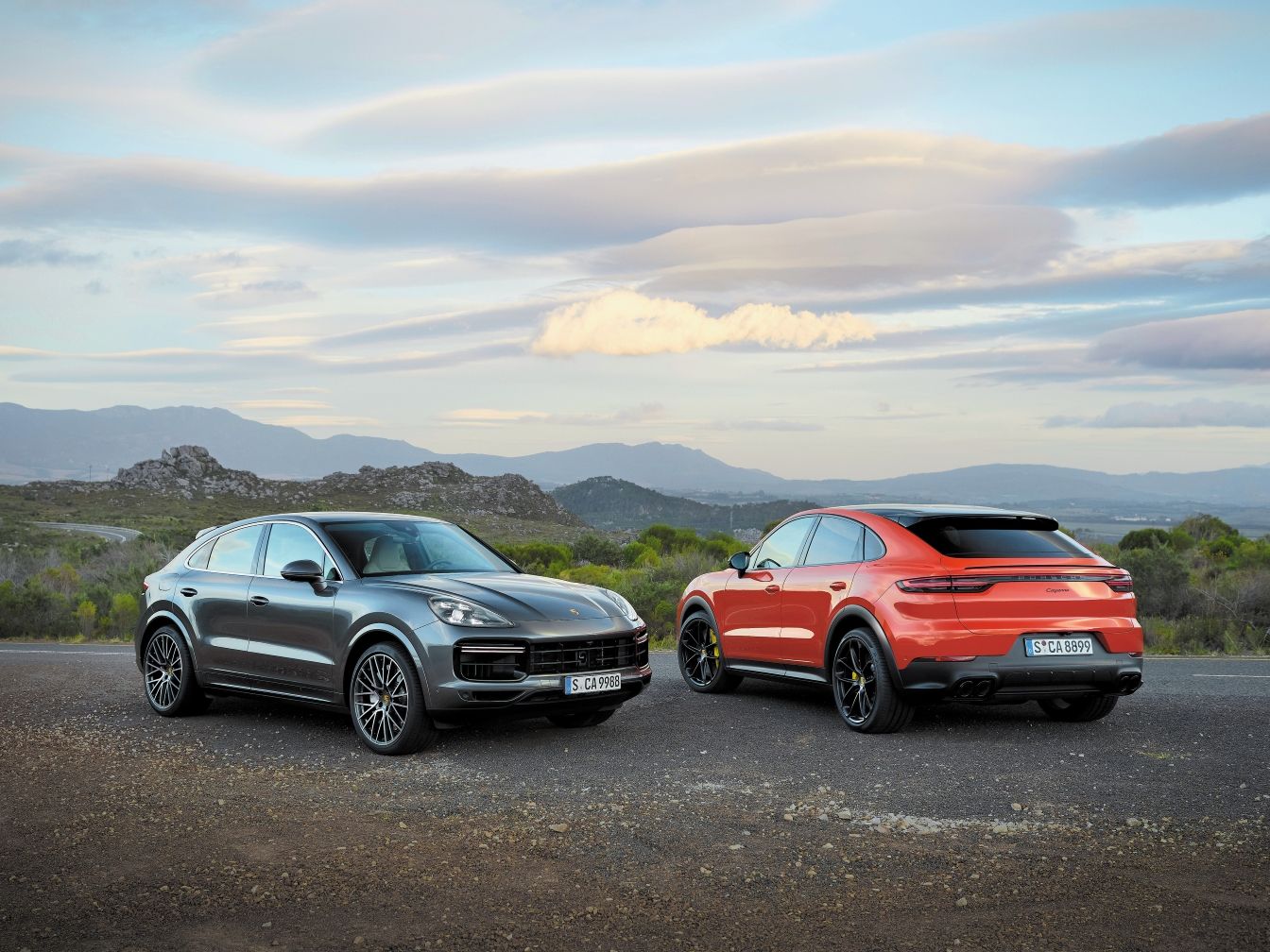
Nine Decades of Innovation at Porsche Engineering
90 Years of Future
In 1931, Ferdinand Porsche founded his engineering office in Stuttgart. Since then, the Porsche name has been closely associated with engineering services projects. A journey through nine decades of automotive history.
When Ferdinand Porsche founded an engineering office in Stuttgart under the name ‘Dr. Ing. h.c. F. Porsche Gesellschaft mit beschränkter Haftung, Konstruktion und Beratung für Motoren- und Fahrzeugbau’ and had it entered in the commercial register on April 25, 1931, he could already look back on a successful career as a chief designer for renowned automobile manufacturers. Although his decision, coming at the height of the world economic crisis, was a risky one, it soon became clear that the engineering office could hold its own against the international competition. In the 1930s, it advanced to become one of the most important centers of automobile development.
1931
1933
1936
1944
The engineering office received its first official order from the automobile manufacturer Wanderer in the spring of 1931. Under the internal designation Type 7, Porsche designed a 1.5-liter, six-cylinder engine as well as the chassis. The first complete vehicle, which followed the same year, was the Porsche Type 8 with an eight-cylinder engine, although this did not actually enter series production. In the spring of 1933, Ferdinand Porsche was commissioned by Auto Union to develop a 16-cylinder race car. The first test drives of the Auto Union race car took place in November 1933, and during its first season in 1934, it set three world records and won several hillclimb races as well as three international Grands Prix.
The office had also been working on building an inexpensive small car since 1933. Soon after, it received an order to design prototypes for “Volkswagen” (People’s Car). In 1936, the government of the German Reich decided to build the Volkswagen its very own factory, which Ferdinand Porsche was also commissioned to plan. At the same time, the engineering office was at work on any number of other orders. For example, the Type 110 small agricultural tractor with an air-cooled two-cylinder engine became the basis for the later “Volkstraktor” (People’s Tractor), as well as the tractor series produced after the Second World War.

Visionary: Ferdinand Porsche and engine expert Josef Kales in the Porsche engineering office at Kronenstrasse 24 (1937).

Legendary: The Auto Union Type C race car in the pits (1936).
New Start with Ferry Porsche
With the increase in the number of air raids on Stuttgart, the engineering office was relocated to Gmünd in Carinthia, Austria, in 1944. After the end of the war, it found itself in a difficult economic situation. In April 1947, Ferdinand Porsche’s son Ferry struck out to venture a new start and, together with his sister Louise Piëch, founded Porsche Konstruktionsbüro GmbH, which was also based in Gmünd in Carinthia. The first large order in the post-war period came from the Italian company Cisitalia. The result, the Type 360 “Cisitalia” race car completed in 1947, featured a state-of-the-art chassis with double longitudinal control arms at the front and a double-joint swing axle at the rear, as well as all-wheel drive.
1947
1948
1952
1961
In the spring of 1947, Ferry Porsche formulated his first ideas for building a sports car, which was given the design number 356. In February 1948, a roadready chassis was produced, for which a sleek aluminum roadster body was subsequently produced. The Porsche 356 “No. 1” Roadster mid-engine sports car received the official blessing of the authorities on June 8, 1948, when the Carinthian provincial government issued its general operating permit. This marked the birth of the Porsche sports car brand. Production of the rear-engine Porsche 356/2 began in the second half of 1948.
Despite the successful start as a vehicle manufacturer, engineering services remained an integral part of Porsche’s range of services. Overseas customers such as the Studebaker Corporation also placed their trust in the office: Between 1952 and 1954, Porsche developed a four-door sedan with a self-supporting body in a modern pontoon design for the US car manufacturer.

The Ur-Beetle: Porsche Type 60 (V3) during the test drives in 1936 at the Porsche villa in the north of Stuttgart.
)
Birth of the Sports Car Brand: Ferry Porsche (center), his father Ferdinand Porsche (right), and Erwin Komenda with the 356 “No. 1” Roadster—the first car to bear the name Porsche (1948).

Technologically Well Ahead of its Time: Drawing of the Type 360 “Cisitalia” from 1947

First Order After The War: Porsche Type 360 “Cisitalia”.
The Think Tank
One of the secrets of Porsche’s success was the extensive testing of its designs. From 1953 onwards, a small airfield near Malmsheim, some 30 km from Stuttgart, was available for certain types of tests. However, the increasingly complex vehicle development process led to the decision to build a dedicated test track, which was to be designed according to the needs and preferences of the testing departments. On October 16, 1961, ground was broken for the construction of the facilities in the Weissach and Flacht districts, 25 km west of Stuttgart. A circular track called a skid pad was built to test driving performance and lateral acceleration, as well as two circuits. Other special sections were also built, including pothole and rough pavement sections.

“How is it possible (…) that I create fundamentals and then leave. It would be better I found my own office and work for everybody.”
Ferdinand Porsche
12
employees
1,500
+
employees
Porsche was growing apace in the 1960s, and in addition to the market launch of the Porsche 901 in 1963—renamed the 911 a year later—and its increasing involvement in motor racing, a large number of customer orders kept the development team busy. Over time, it became increasingly apparent that additional test benches and workshops were needed for vehicle testing. By the end of the 1960s, plans for the Porsche Development Center Weissach (EZW) had begun to take their final shape. In the fall of 1971, the entire development department, including design, was relocated from Zuffenhausen to Weissach. From 1974 onwards, a building in the shape of a standard hexagon was constructed, which ensured perfect opportunities for working and collaboration. The innovative idea behind the concept: The EZW was to be comprised of many small think tanks, which would endow the central ‘brain’ with a high rate of response and development through short neural pathways.
1971
2001
2014
The following years saw the successive expansion of the EZW. The Measuring Center for Environmental Technology (MZU) was equipped with six exhaust gas test benches in 1982. Construction of the test building for engines and units (PMA) began in 1983. In May 1986, Porsche opened what was then the world’s most modern wind tunnel. The third construction phase was completed on September 29, 1986 with an extensive crash facility. The new facility offered modern testing capabilities with test conditions that remained unaffected by the weather, and which had the flexibility to adapt to new testing techniques.

Order From Overseas: Porsche Type 542 “Studebaker” in front of the Solitude Palace (1953).

Early Proving Grounds: Driving tests on Malmsheim airfield (1953/54).

Circular Track for Testing: Construction of the skid pad in 1962.
Engineering Services on a Growth Trajectory
Since the 1990s, development trends such as reducing fuel consumption and emissions, improving active and passive safety, or replacing mechanical components with electronics have meant that more and more factors had to be taken into account in customer orders. This increased the amount of coordination required within the EZW, and with the developer teams. In addition, the expansion of the Porsche sports car model range and its entry into the luxury SUV segment with the Cayenne required that a keen focus be directed at managing the company’s own projects. In order to meet the new demands in terms of project management, Porsche placed the EZW engineering services unit on a new footing in 2001 with the founding of Porsche Engineering Group GmbH. Since then, the work on all Porsche customer projects has been pooled there, with work also continuing on internal sports car developments for Porsche. One of the first projects was a water-cooled V2 motorcycle engine, the “Revolution Engine” developed for Harley-Davidson in 2002.

Perfect Working Environment: Aerial view of the development center in Weissach (1975).

Successively Expanded: Aerial view of the Porsche Development Center in Weissach (2011).
Internationally Active
Porsche Engineering took the first step on its international growth path in 2001 when it opened its location in Prague, which specializes in complex technical calculations and simulations. Since 2012, the company has also been operating one of the world’s best-known automotive test sites: the Nardò Technical Center in Apulia, southern Italy. More than 20 test tracks and test facilities extend over an area amounting to 700 hectares, and Porsche Engineering also offers engineering services such as acoustic testing and the testing of driver assistance systems.
2016
2018
2019
The year 2014 was decisive for the ongoing development of Porsche Engineering for two reasons. On the one hand, Porsche returned to the endurance race at Le Mans after an absence of 16 years, and took overall victory three consecutive years with the 919 Hybrid starting in 2015. Porsche Engineering developed the complete energy storage system for the innovative drive concept—from the mechanical structure to the complete system control and testing. Also in 2014, the company founded a subsidiary in China. Since then, the Shanghai location has formed the interface to local companies, as well as being a strategic partner for Porsche developments for the Chinese market. It specializes in chassis, electronic components and systems, test automation, rapid charging and technology scouting. In 2016, Porsche Engineering rounded off its expertise in the areas of function and software development with its subsidiary in Cluj-Napoca, Romania. An office in Ostrava in the Czech Republic has boosted Porsche Engineering’s expertise in the field of software development even further since 2018. The engineers at Porsche Engineering are therefore in a position to develop electronics solutions for a wide range of requirements—including ones for the vehicles of the future.

World-Renowned: The Nardò Technical Center in Apulia.

Three-Time Winner: The winning 919 Hybrid at the 24 Hours of Le Mans, driven by Nico Hülkenberg, Earl Bamber and Nick Tandy (2015).
The international network also enables the engineers to implement complete vehicle developments and present their customers with turnkey results. Porsche Engineering proved this with the Porsche Cayenne Coupé: As general contractor, the service provider was responsible for the entire process chain, from the concept and testing to monitoring the start of production in 2019.
Porsche Engineering has a clear vision for the future of the automobile: It has a perceptive ability, processes the impressions, keeps learning and therefore adapts increasingly well to customer requirements. It forwards information to the back end, where all fleet data is validated and optimized in the cloud. It then receives new software packages with improved and enhanced features “over the air” (OTA). This creates the basis for seamless integration of the vehicle into the customer’s digital ecosystem and for efficient electric drive units. Autopilot functions will also only be feasible when there are new electronics architectures and connectivity concepts. As the overall vehicle developer, Porsche Engineering is implementing these new functions in their entirety, including software, hardware and the connectivity they require.

Clear Vision: As an international technology partner, Porsche Engineering is developing the intelligent and connected vehicle of the future—including functions and software.

Full Responsibility: For the Cayenne Coupé, Porsche Engineering acted as general contractor for complete vehicle development. Equipment features such as the panoramic glass roof create a unique feeling of spaciousness.

Sports Machine: An outstanding feature of the Cayago Seabob was its innovative impeller drive with battery technology from Porsche Engineering.
More Than Just Automotive Development
Engineering services by Porsche have not traditionally been limited to the vehicle sector. The company developed a sled for luger Georg Hackl in which he could change the damping while driving, thereby achieving a higher cornering speed. The result: A silver medal at the 2002 Winter Olympics in Salt Lake City (USA). In 2007, the engineers developed three electronic components for the Seabob sports watercraft made by the manufacturer Cayago: The battery manager, the motor control unit and the control panel with graphic display.
Info
Text first published in the Porsche Engineering Magazine, issue 2/2021.
Text: Richard Backhaus
Copyright: All images, videos, and audio files published in this article are subject to copyright. Reproduction in whole or in part is not permitted without the written consent of Porsche Engineering. Please contact us for further information.
Contact
You have questions or want to learn more? Get in touch with us: info@porsche-engineering.de
Consumption Data
Cayenne Coupé
Fuel consumption (combined): 9.5 - 9.4 l/100 km
CO₂ emissions (combined): 217 - 214 g/km
Energy efficiency class: D
Cayenne E-Hybrid Coupé
Fuel consumption (combined): 2.6-2.5 l/100 km
Power consumption (combined): 22.4-22.0 kWh/100 km;
CO₂ emissions (combined): 60-58 g/km
Energy efficiency class: A+
Cayenne S Coupé
Fuel consumption (combined): 9.9 - 9.7 l/100 km
CO₂ emissions (combined): 225 - 222 g/km
Energy efficiency class: D
Cayenne GTS Coupé
Fuel consumption (combined): 11.4 - 11.2 l/100 km
CO₂ emissions (combined): 260 - 256 g/km
Energy efficiency class: F-E
Cayenne Turbo Coupé
Fuel consumption (combined): 11.6 l/100 km
CO₂ emissions (combined): 264 g/km
Energy efficiency class: F
Cayenne Turbo S E-Hybrid Coupé
Fuel consumption (combined): 3.3-3.2 l/100 km
Power consumption (combined): 23.5-23.0 kWh/100 km;
CO₂ emissions (combined): 76-73 g/km
Energy efficiency class: A+
Taycan Turbo S
Power consumption (combined): 28.5 kWh/100 km
CO₂ emissions (combined): 0 g/km
Energy efficiency class: A+

